You may not find this terribly rewarding unless you're included here, so this is a good time for casual and random browsers to turn back before they get too caught up in the sweep and majesty of the proceedings and can't let go.
We're not based in Europe anymore, and we've struggled through the covid-19 lockdowns like everyone else, so we haven't set foot in Italy since February 2019. Now we're making up for lost time with mad sightseeing, but missing the cats even more sorely as the days fly by.
Last walks round Rome for this year
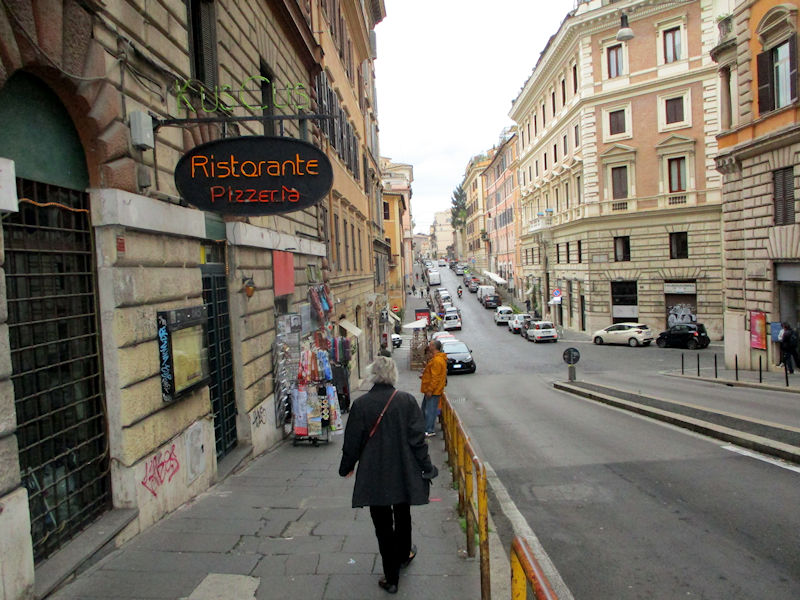
We've just ticked off Santa Maria Maggiore on our tourist card, and we're marching back down the Esquiline Hill towards Piazza Venezia, more or less (15 November 2022).
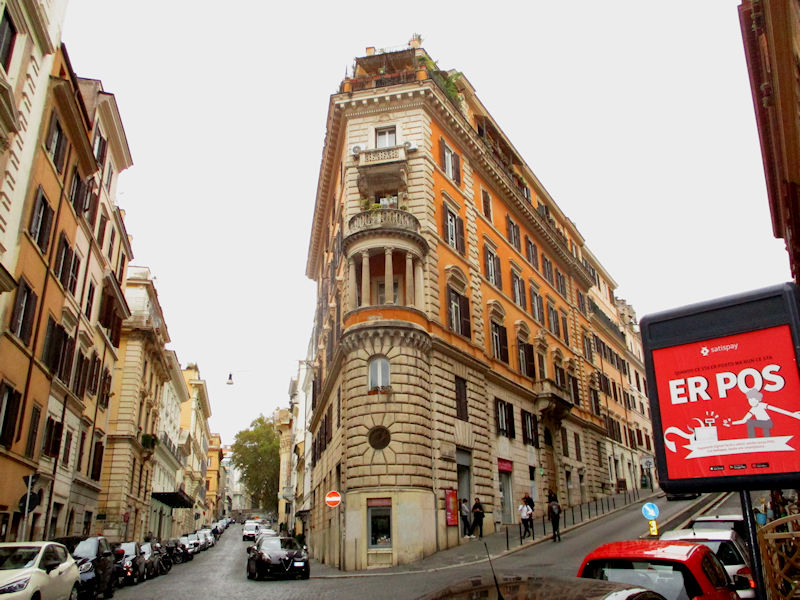
On the Via Urbana

Street scenes off Via Urbana and Via Leonina
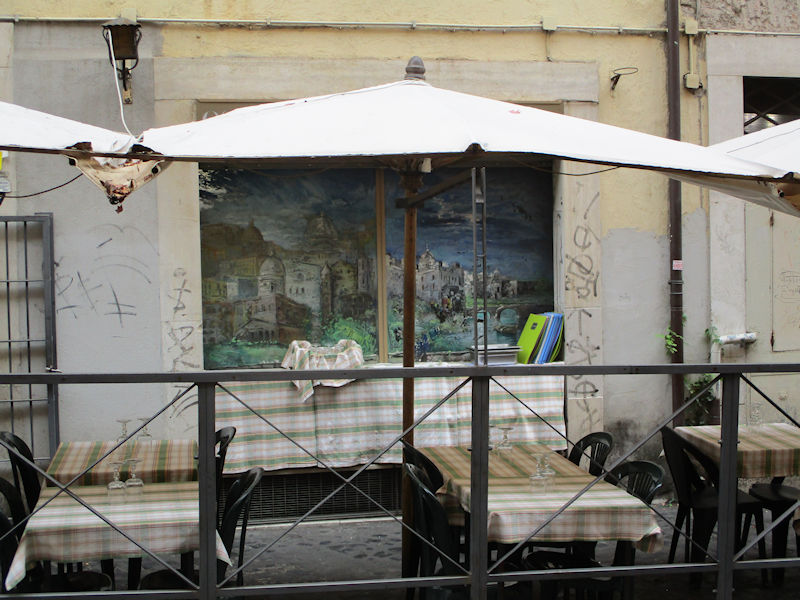
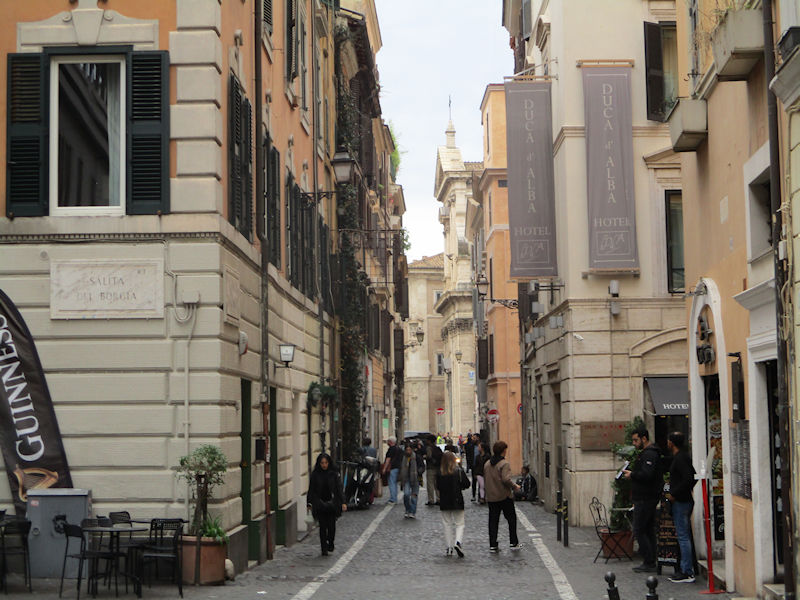
Along the Via Leonina, passing the Salita dei Borgia on the left, with . . .
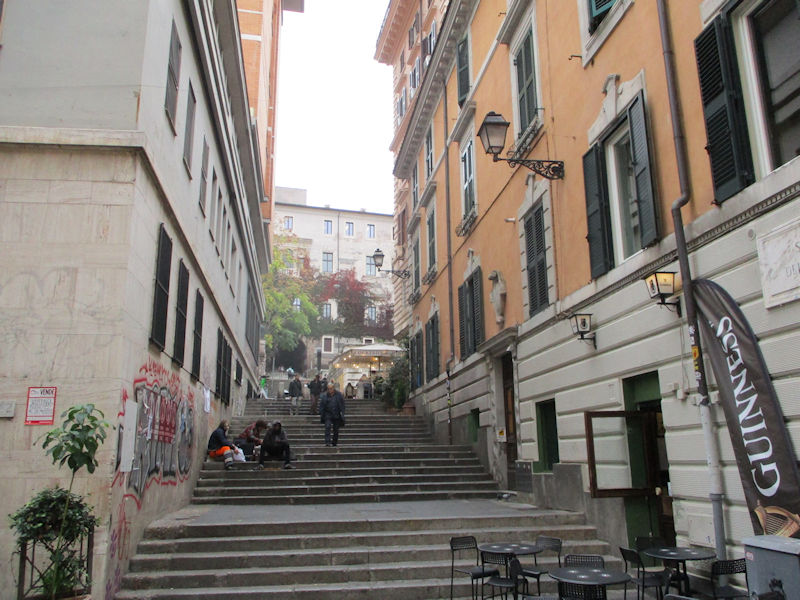
. . . a glance up the Salita dei Borgia leading to the parallel Via Cavour thoroughfare

The Chiesa di Santa Maria ai Monti, where the narrow Via Leonina becomes the Via della Madonna dei Monti
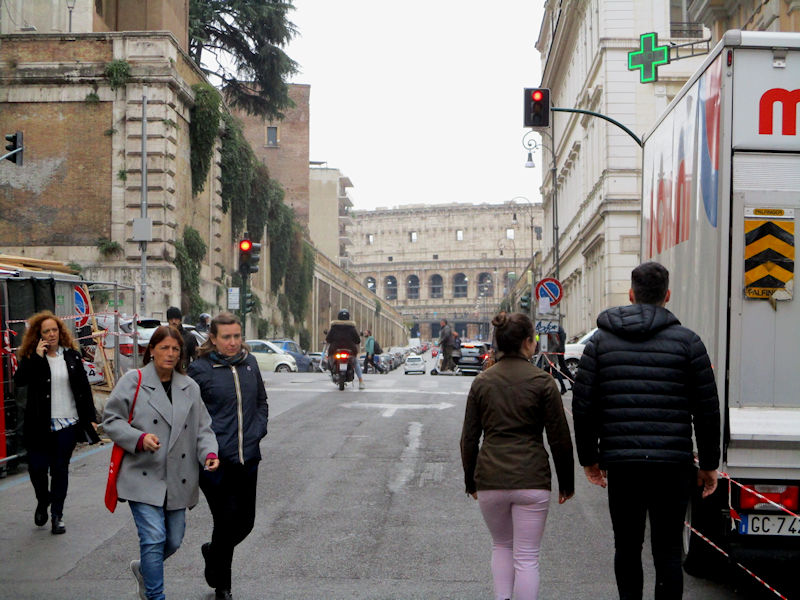
The Colosseum in the offing, but . . .

. . . we're still following along in the narrow Via della Madonna dei Monti. That's a little bar/café called La Casetta a Monti.

The Via della Madonna dei Monti is soon to debouch out onto a piazza adjacent to the Largo Corrado Ricci, from which traffic coming down the Via Cavour can join the Via dei Fori Imperiali toward the Piazza Venezia.

The tower in the background is atop the Palazzo Senatorio on the Campidoglio, and . . .
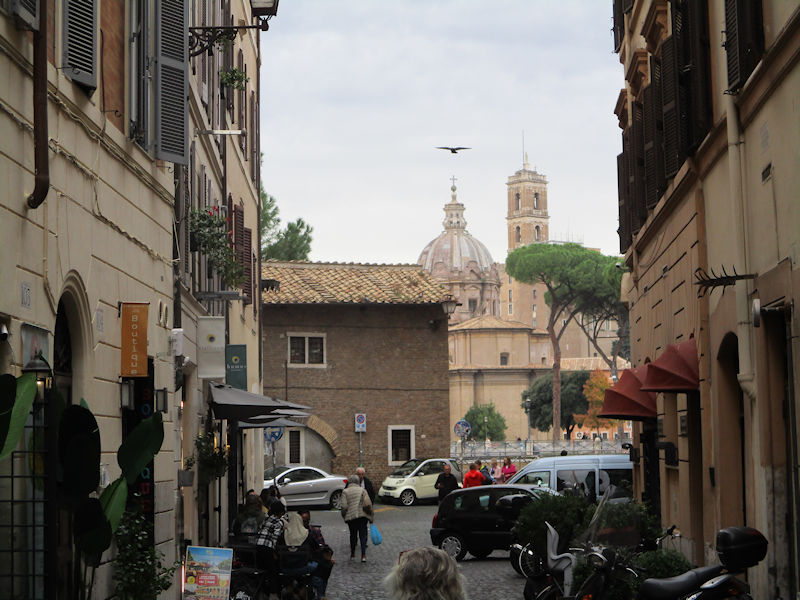
. . . the dome belongs to the Chiesa Santi Luca e Martina martiri next to the Arch of Septimius Severus in the Forum area.

At the end of our street, this is the strange medieval defensive tower, the Torre dei Conti, overlooking the Largo Corrado Ricci and the remains of the Forum of Nerva. It was built by a brother of Pope Innocent III in 1238 on behalf of their Conti di Segni family, strategically sited on the frontier between the Contis and the rival family, the Frangipani (tho' some say they were the Orsini). It was nearly twice as tall as it is now (which is 29m), but the upper floors were destroyed in earthquakes, and it was then abandoned until the early 17th century. In 1937 Mussolini donated it to his Arditi band of stormtroopers; that ended in 1943, but it's not apparent that there's anything going on in there now.
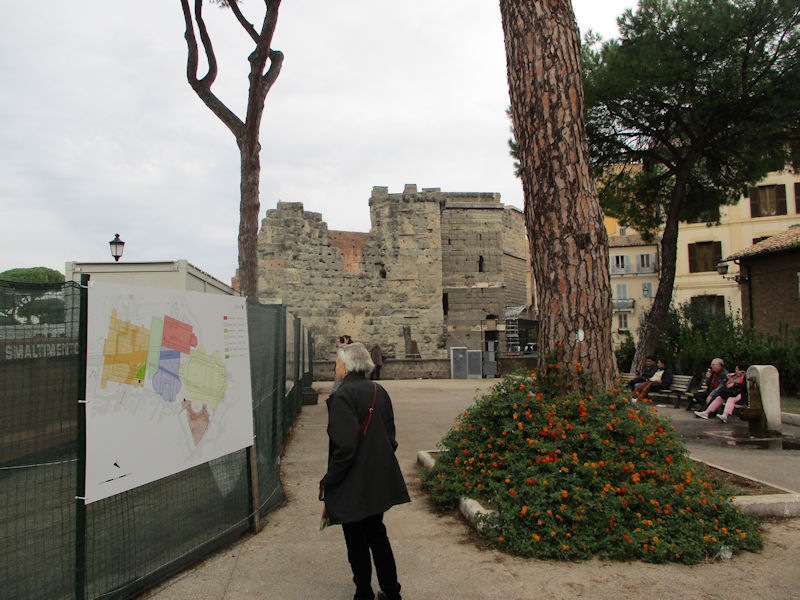
We're presently contemplating the archaeological remains of the Forum of Nerva, along the Via dei Fori Imperiali. Nerva completed the Forum with his name on it, inaugurated in AD 97, but it was actually commissioned mostly by his predecessor Domitian (r. 81-96).
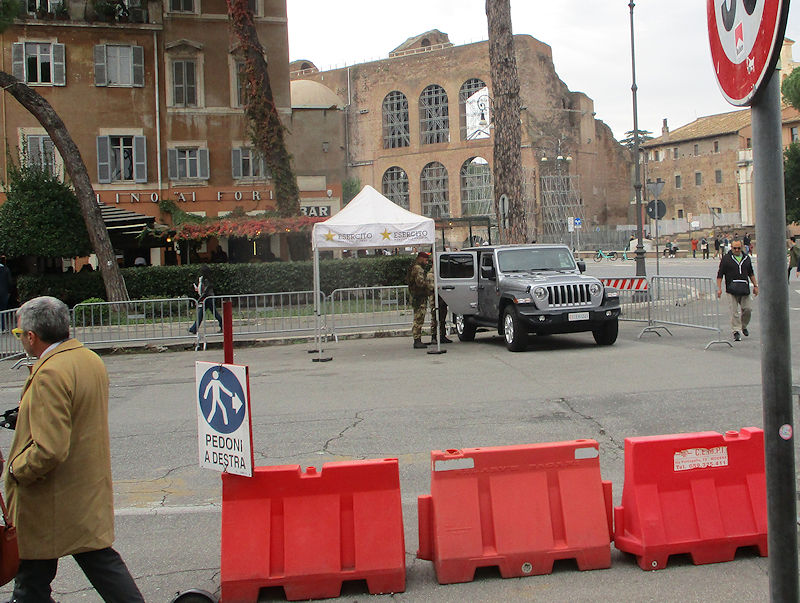
Across the Largo Corrado Ricci, a helpful little military reminder -- these pop-up sentry points are all over the place, and no one seems in the least resentful about it.
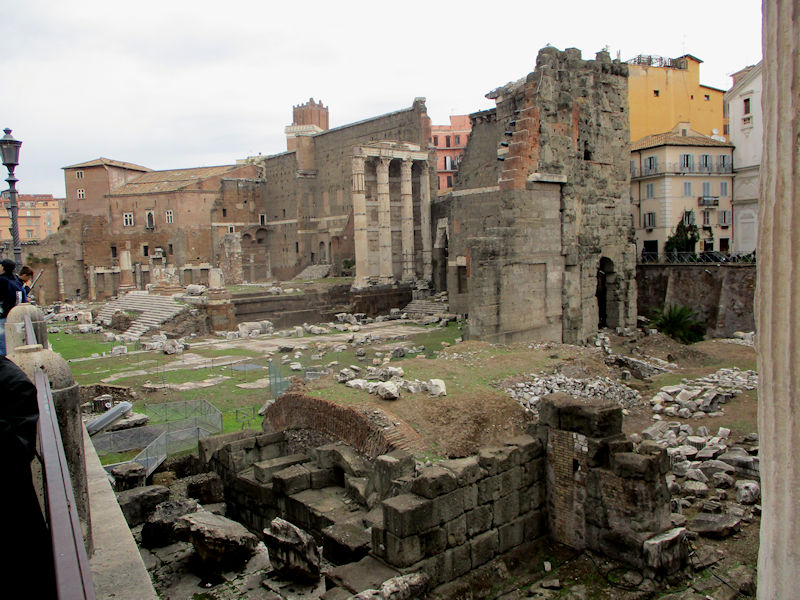
From the Forum of the Emperor Nerva, we progress towards the Forum of Augustus, which is now . . .
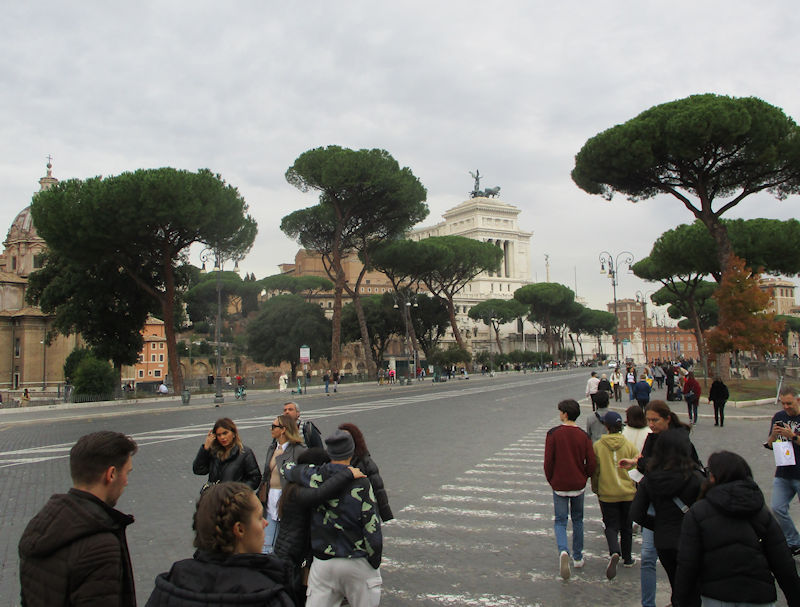
. . . convincingly bisected by the Fori Imperiali thoroughfare.

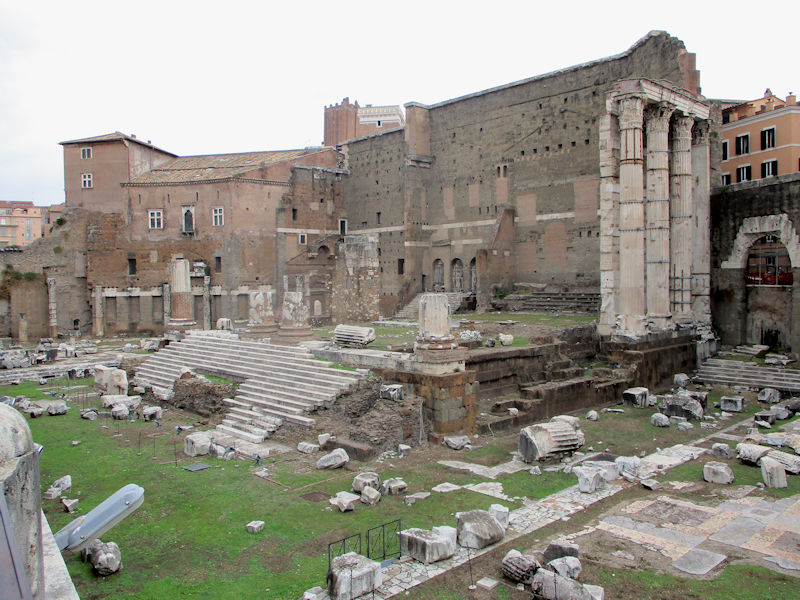
The Forum of Augustus was initiated by his Temple of Mars the Avenger, begun by Octavian Augusta in 42 BC prior to his Battle of Philippi to avenge the assassination of his uncle Julius Caesar, but it was after 27 BC, when he assumed the title of First Citizen (and de facto emperor), that it was formally built up, and inaugurated in 2 BC.

Farther on, there's the Forum of Trajan and Trajan's Column.
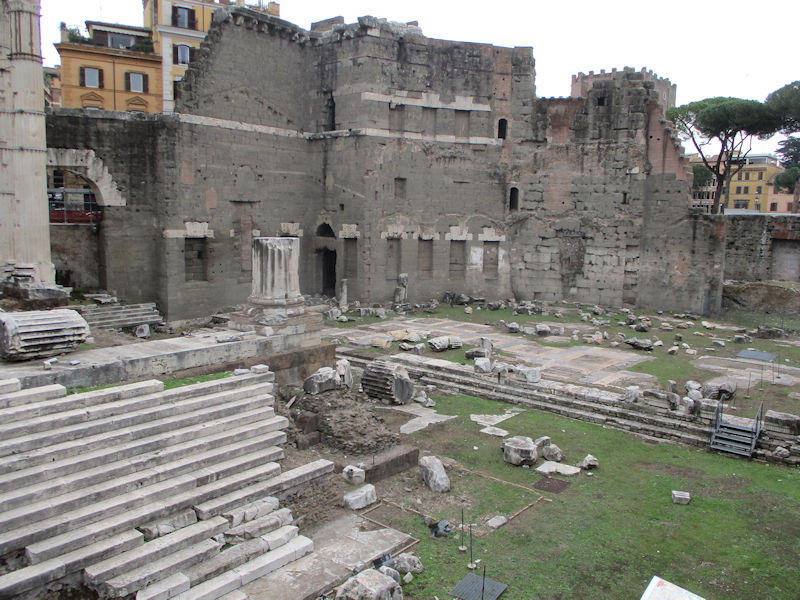
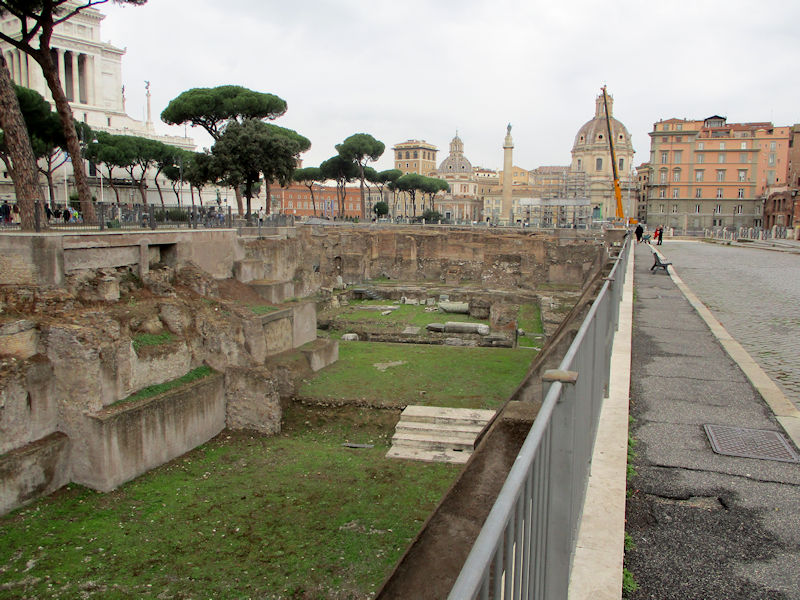
The Via Alessandrina (on the right) runs along this sliver of excavations and dead-ends at the present Piazza Foro Traiano and the Trajan Column.
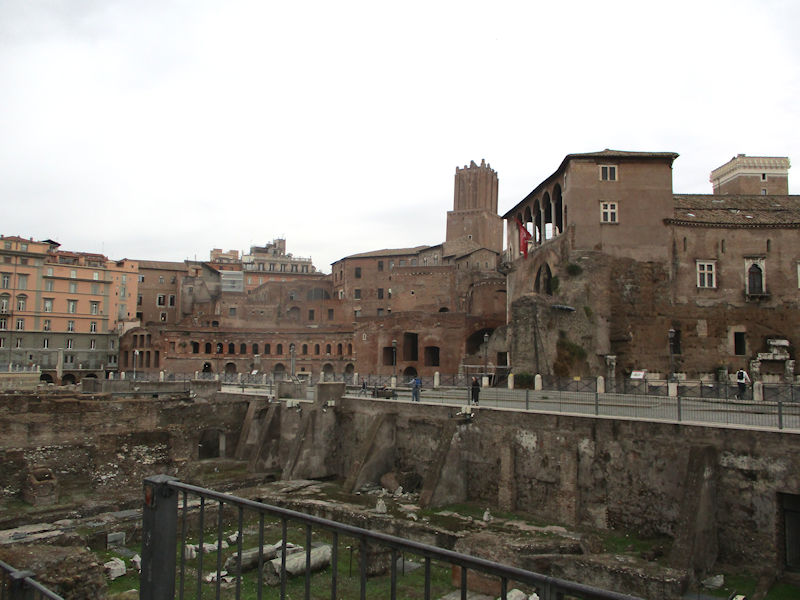
The medieval defensive house called the Torre Milizie, and, just to the right of it . . .
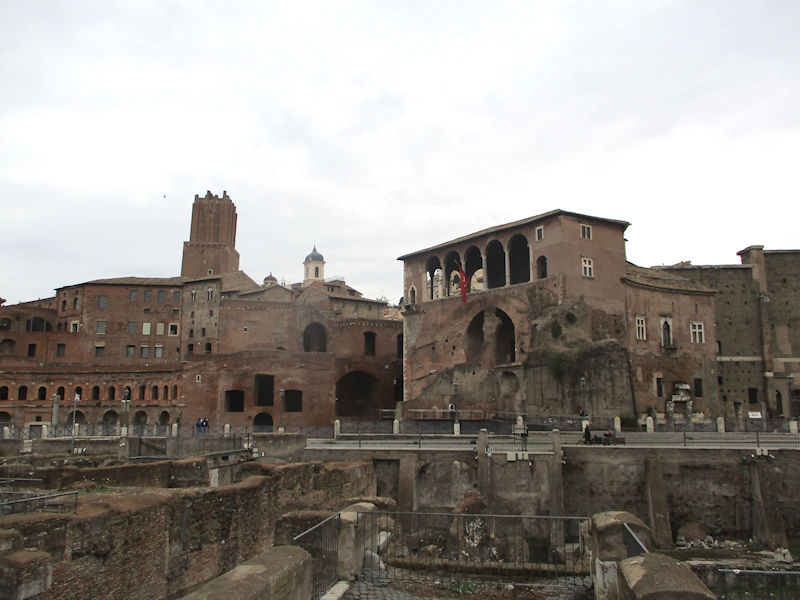
. . . with the generous loggia, the Casa dei Cavalieri di Rodi (House of the Knights of Rhodes), since 1946 the home of the charitable Sovereign Military Order of Malta, one of the organizations claiming to be the descendants of the Crusader order of the Knights of St John of Jerusalem, the Hospitallers.
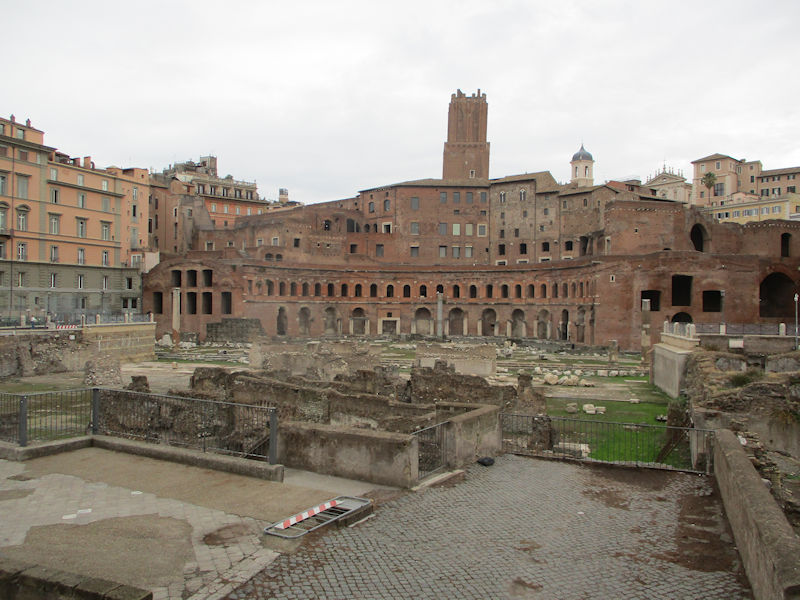
The concave windowed ruin in the center was once the Markets of Trajan.
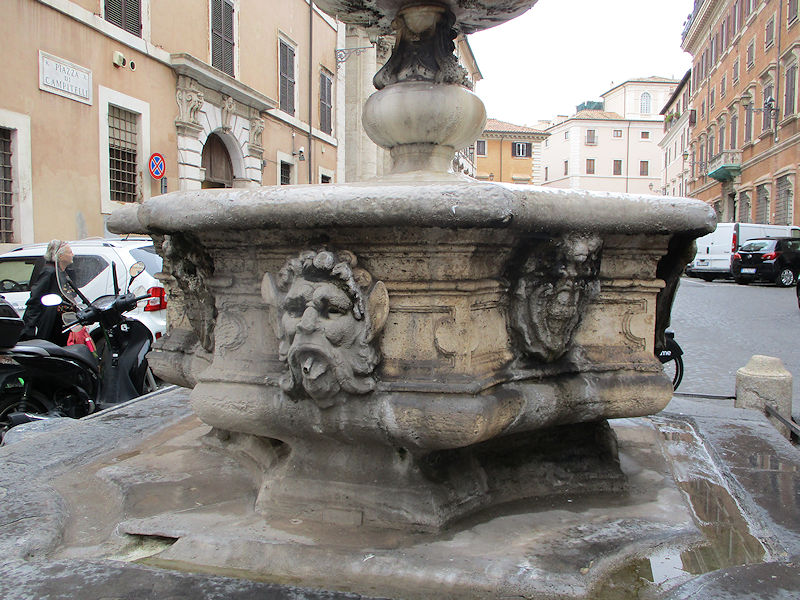
But moving along, here we are in the Piazza di Campitelli, just a bit north of the Teatro Marcello.

And a few steps farther on, this is the Chiesa Santa Maria in Portico in Campitelli, which is serviced by the 'Clerics Regular of the Mother of God'. There was a church here ca. 525, housing an icon of the Madonna of the Portico, but when the icon, processed through the streets during a 17th century plague, miraculously ended the epidemic, it was deeply felt that she deserved a grander home, and with a design by Carlo Rainaldi, the present edifice was put up in the 1660s.
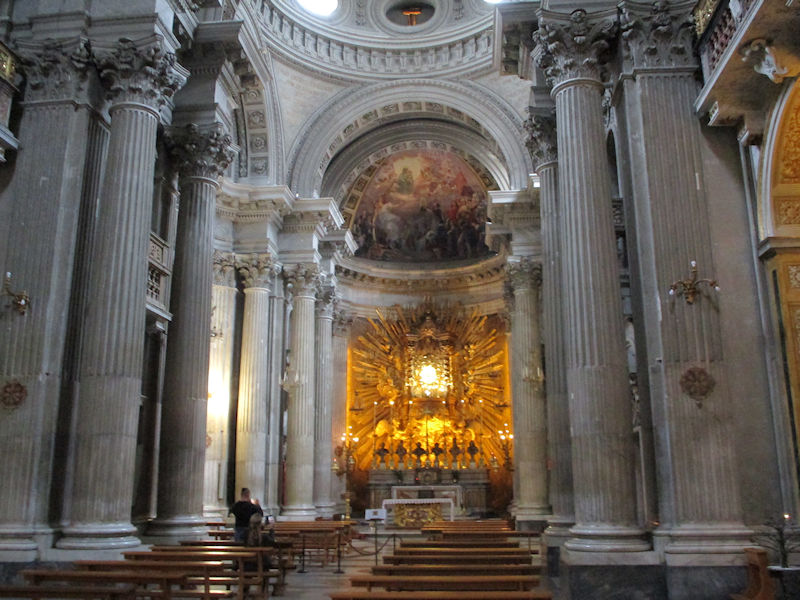
The main altar has that miraculous little icon in the centre.
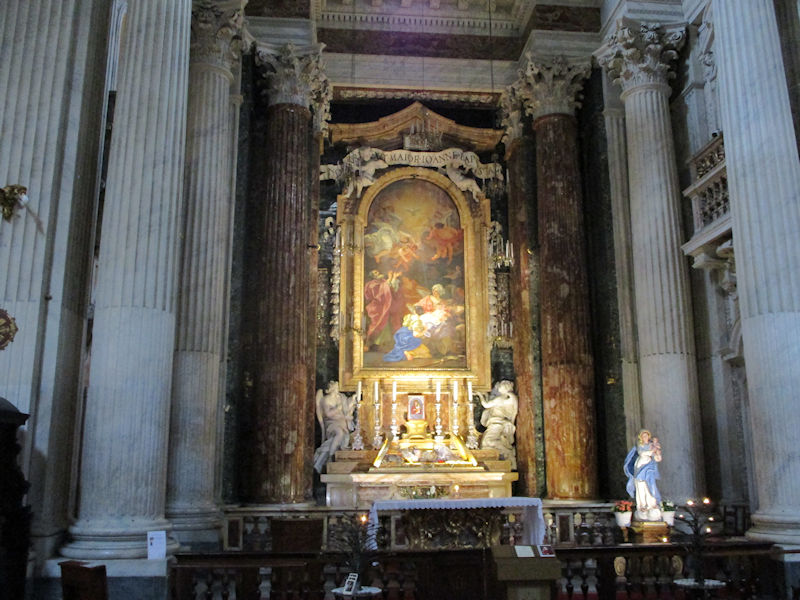
Another chapel
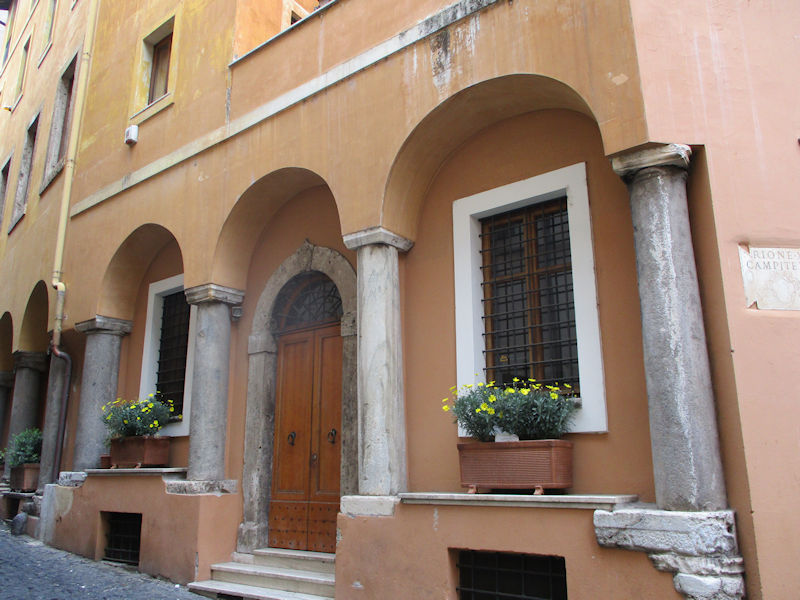
A new life for some ancient columns
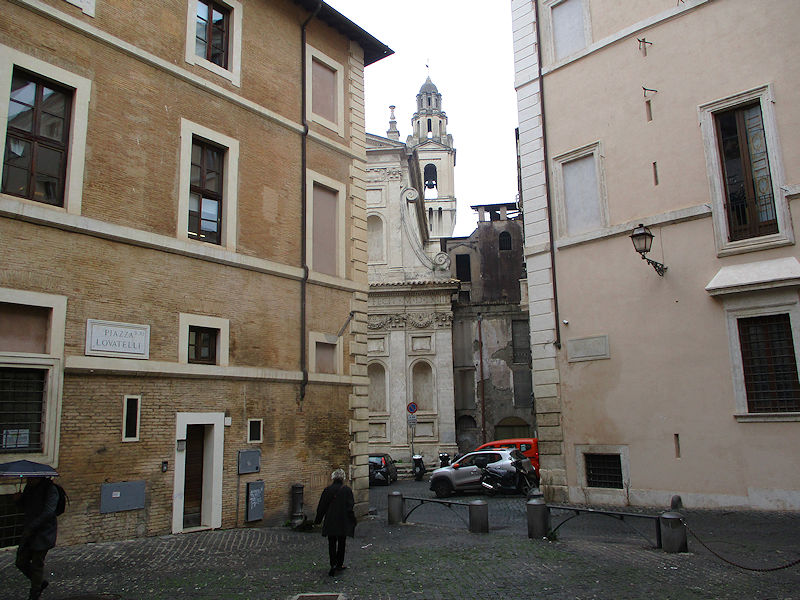
The Piazza Lovatelli, near the Piazza Campitelli, with the Chiesa di Santa Caterina dei Funari peeking from round the corner
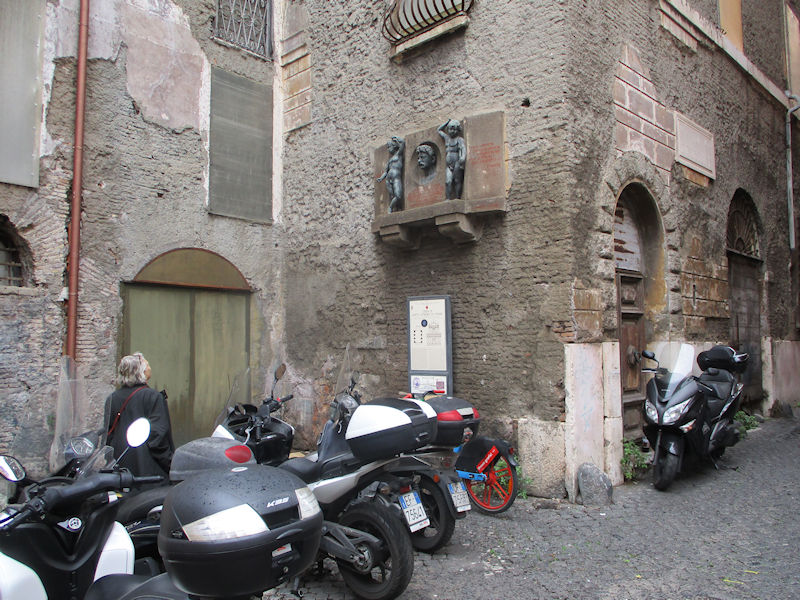
An info plaque on the Chiesa di Santa Caterina dei Funari, and a mini-monument to the beloved poet and folklorist Giggi Zanazzo (1860-1911)
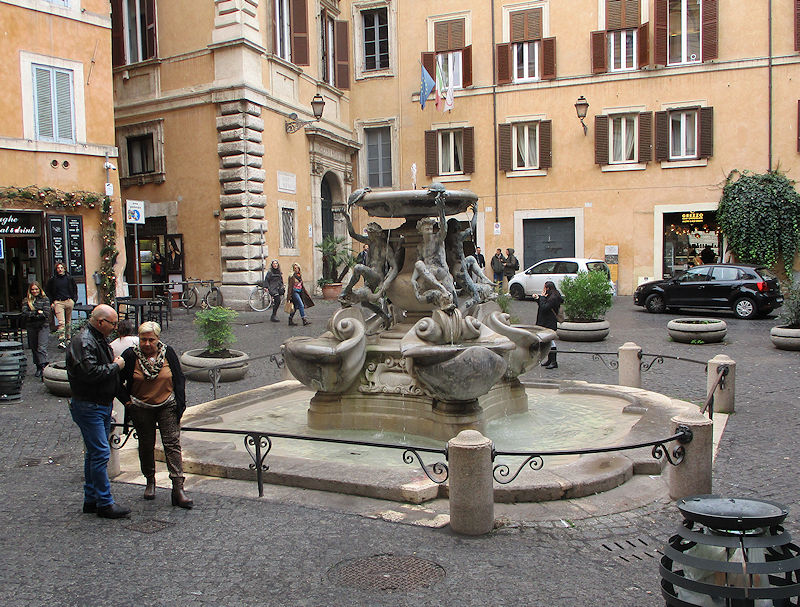
The Fontana delle Tartarughe, or Turtle Fountain, here in the Piazza Mattei, was one of the only fountains financed by a private citizen, the banker Muzio Mattei. The city's plan was, after the repairs to a disused ancient aqueduct, to build 18 new fountains to connect to it. The papal architect, Della Porta, began with the fountains in the Piazza del Popolo, the two in the Navona, and another in front of the Pathenon in the 1570s. This one was intended for the market in the Jewish ghetto, near the Theatre of Marcellus, but Mattei offered to pay to have it placed here, in the 1580s, where his family had properties.
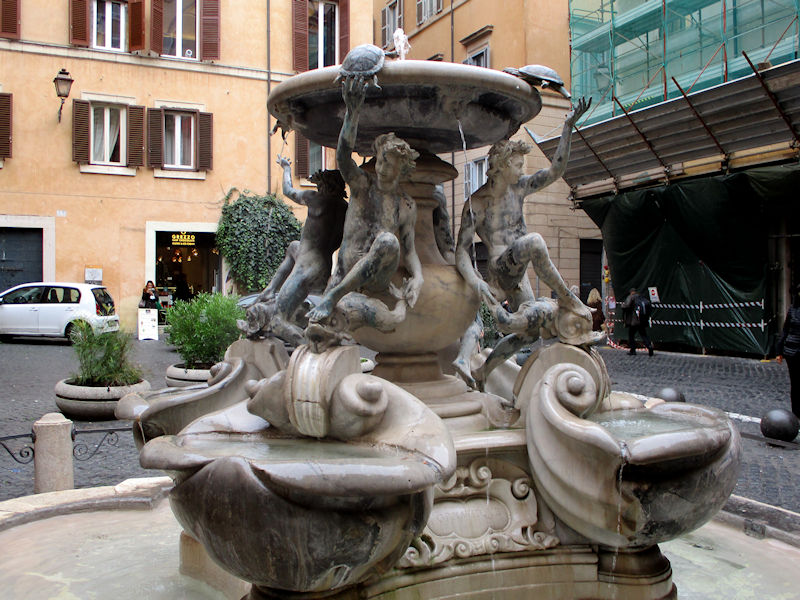
The turtles were added in the 1650s and are often attributed to Bernini.

The Jewish ghetto area, based along the Via del Portico d'OttaVia by the Teatro Marcello and extending toward the Tiber. It was established by Pope Paul IV in 1555, walled round and locked up at night, at the expense of the Jewish community.

Along the Via del Portico d'OttaVia
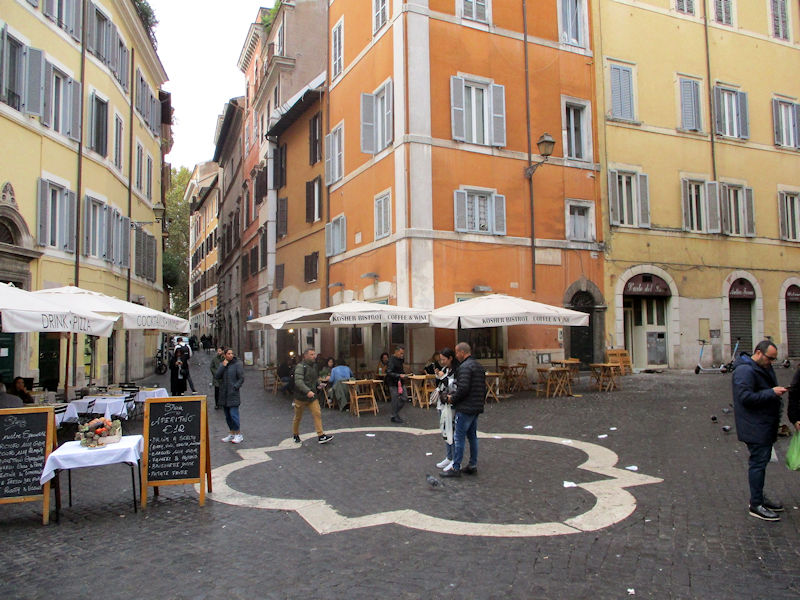
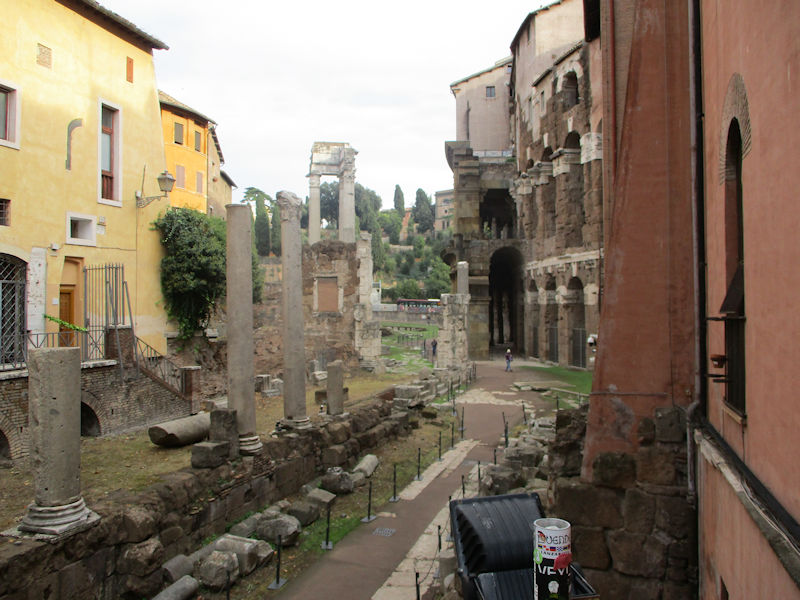
Nearby, we're sneaking through the footpath alongside the Theatre of Marcellus towards the main road on the far side.

We're looking for the Basilica of San Giorgio in Velabro, an old favorite, but can't recall exactly where it is.
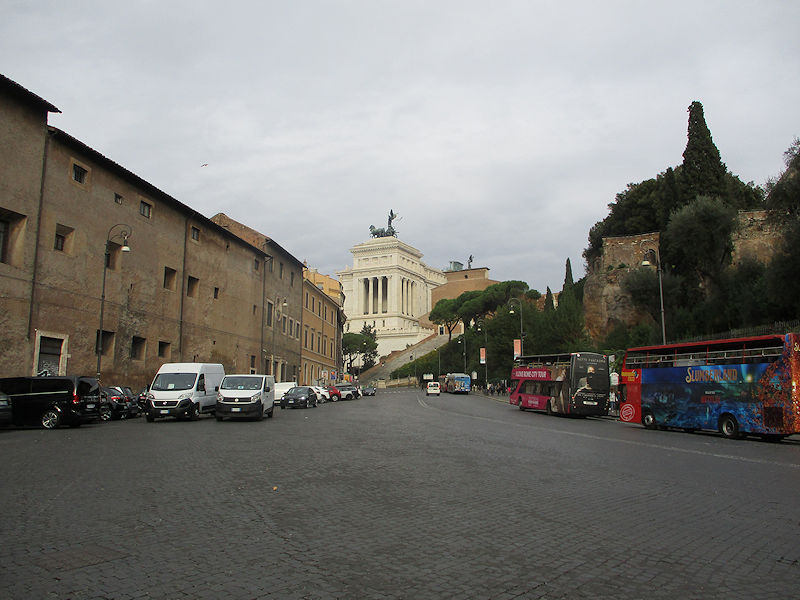
We remember only that it's on the far side of the main road down from the Campidoglio and not too far from the Forum.

So there's the Forum, but no San Giorgio.
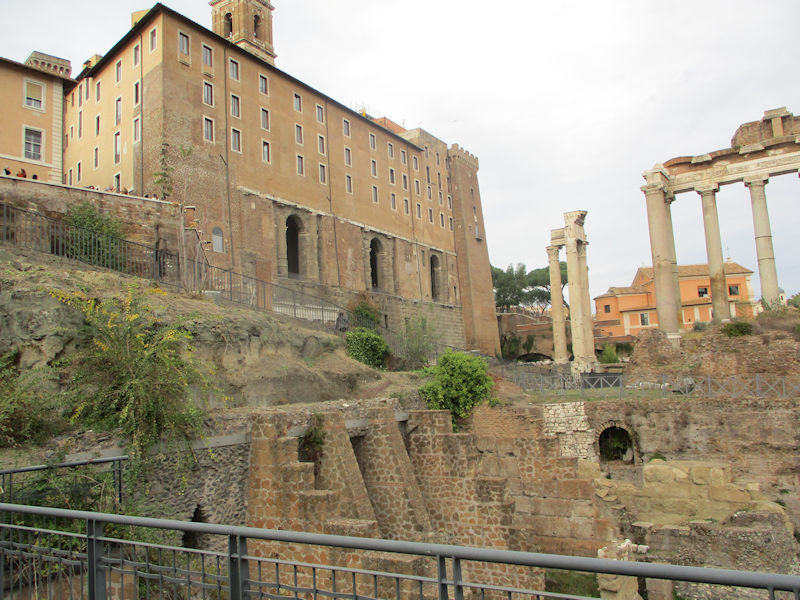
The back of the Campidoglio: the Palazzo Senatorio and what's left of the Temple of Saturn

Here we are, the Chiesa di San Giorgio in Velabro, built in the 7th & 8th centuries in what was then a marsh area often flooded by the Tiber (the origin of the word 'Velabrum'), intended to honor St George, the warrior saint of Cappadocia in central Turkey.

Since this is in what was the Greek section of old Rome, the Greek Pope Zachary, in the mid-8th century, acquired a relic of St George from Cappadocia and rededicated the church in his name, centuries before the cult of George the warrior saint was brought back by returning Crusaders from the East. The portico and bell tower were added in the 13th century.
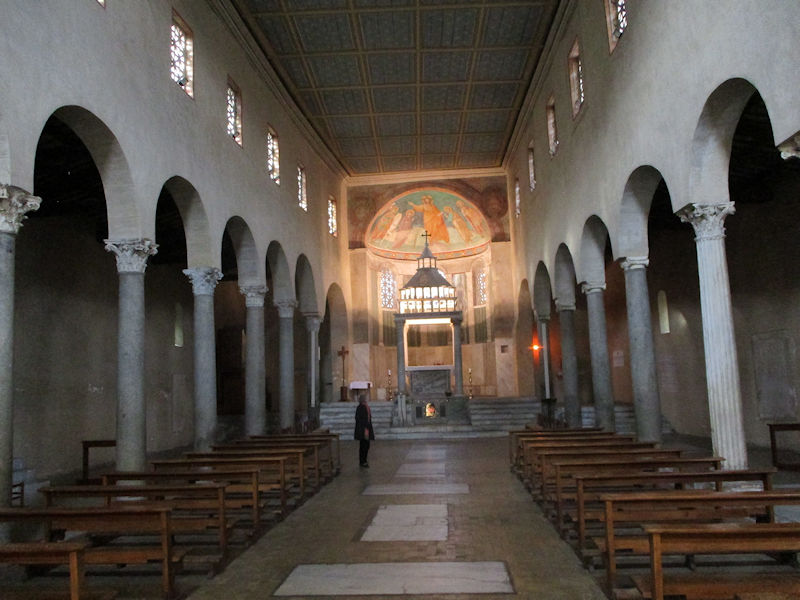
In the steps below the altar, we're now told that 'you can see the alleged relics of St George (part of his cranium, the head of his lance and part of his battle standard)', but we were in too much of a hurry to notice that at the time. That's our grievous loss.

The 13th century fresco in the apse shows Christ the King, with the Virgin Mary and St George on his horse on the left, Saints Peter and Sebastian on the right. 'The work is now attributed to [Pietro] Cavallini and his school rather than to Giotto, although the matter is not decided' (source).
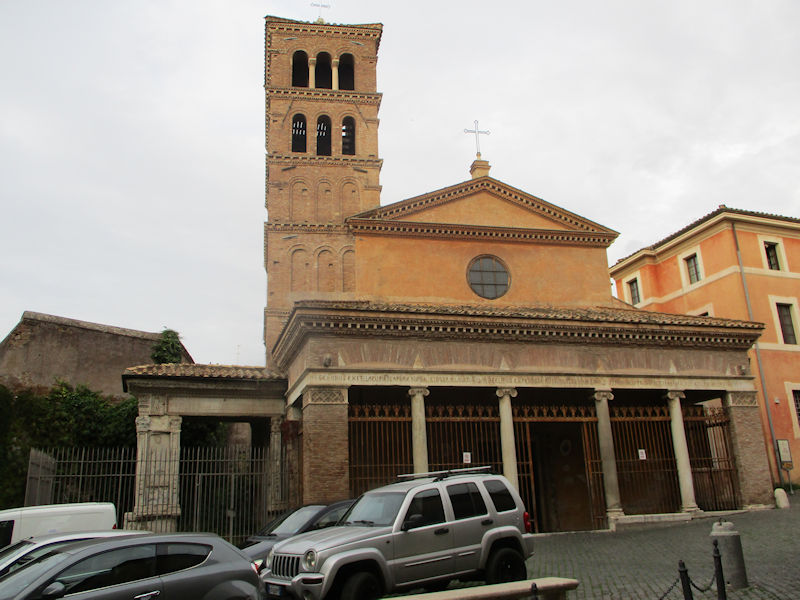
Significant restorations were carried out in the mid-1920s, but in July 1993 the portico was collapsed and a large hole blown out of the front wall by a car bomb donated (and detonated) by the Sicilian Mafia near the façade, which required a further five years of work to repair the damage using fragments of the original structure where possible. (The perps were convicted.)
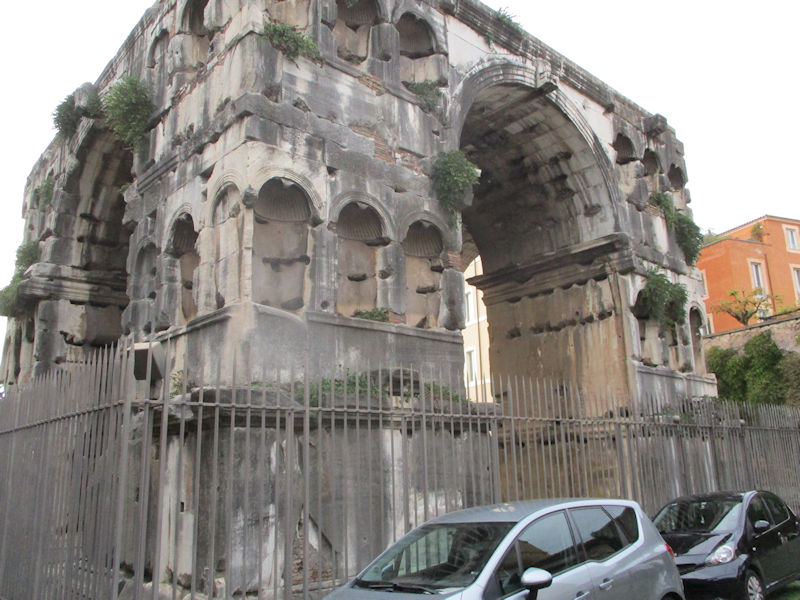
Alongside St George's church is this, the Arco di Giano (Arch of Janus), from the early 4th century, which appears to have been a kind of shelter for the traders in the Forum Boarium cattle market. The mention of Janus probably comes from the early modern era, since Janus was sometimes shown with four faces (Ianus Quadrifons), and this thing is four-fronted and four-arched.

Apparently, in the medieval period the Frangipani family turned it into a fortress, and so it remained until into the 19th century.

The Arch of Janus has been closed to the public since the Mafia bombing in 1993.

That, in the little park across the Piazza della Bocca della Verità and backing onto the Lungotevere Aventino and the river, is the Tempio di Ercole Vincitore, or Temple of Hercules Victor ('the earliest surviving marble building in Rome'), which probably dates from the 2nd century BC. (The Bocca della Verità, or Mouth of Truth, is just across the street in the portico of the Santa Maria in Cosmedin church; we visited there a few days ago.)
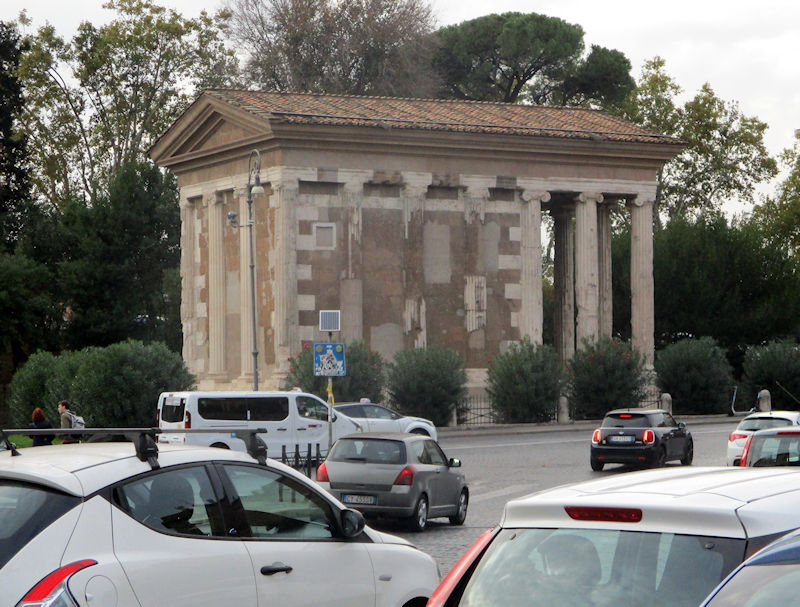
And here, in the same little park, is the Tempio di Portuno or of Fortuna Virilis; if it refers to Portunus, he was the god of livestock and ports and would have watched over the Forum Boarium port area here, with the cattle market and grain warehouses. It's said to date from the 3rd or 4th century BC but was rebuilt in the period 120-80 BC. It survived by having been turned into a church dedicated to St Mary of Egypt in AD 872.

The Janus Arch and Church of St George

It's our last evening here, and we need to pause to express our gratitude to the local COOP for the reliable availability of inexpensive but satisfactory beers and wines.
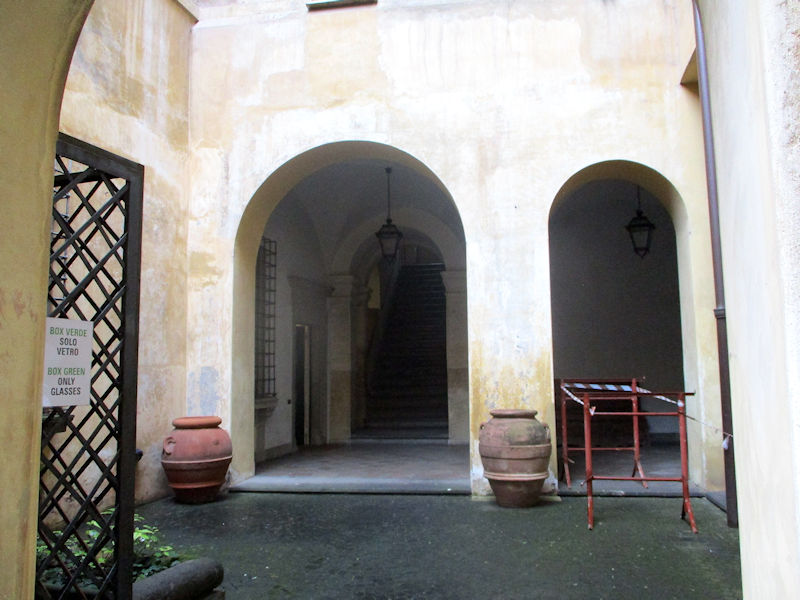
A last look round the Palazzo Donarelli -- our door is just through the left arch next to the grilled window.

The Donarelli courtyard from our front door

Accommodations for our fellow Donarellians

We'll miss the Palazzo Donarelli (except for the 1/3 size bathroom/laundry room).
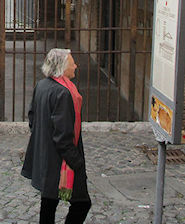 Dwight Peck's personal website
Dwight Peck's personal website






















































































